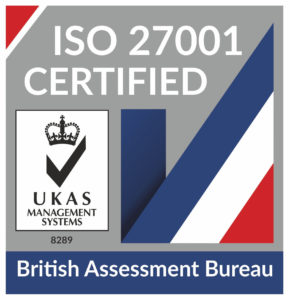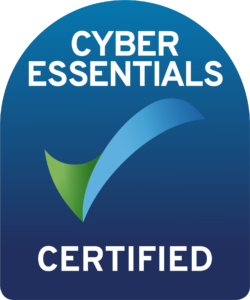
HaloITSM Guides
Documentation to assist with the setup and configuration of the HaloITSM platform
Invoicing in Halo Explained
Enabling Billing from Halo
The first thing to so is make sure that you have the billing functions enabled in Halo. Navigate to the first-level configuration screen and you will see a billing module icon. If it’s grey, hover over it and click on the + symbol to enable billing:
This should immediately show the ‘Invoices’ button on the left-hand navigation bar:
This area has three separate subsections:
- Invoices
This is a list of all of your pre-generated invoices. These invoices should match exactly with the invoices in your third-party billing solution (if enabled). From here, you can print or generate PDFs of your invoices. You can also edit invoices provided that they have not been synced to a third party accounts, or if Halo is able to edit the invoice in your third party accounts. If Halo is unable to update the invoice in your third party accounts, you will see an error.
- Recurring Invoices
This is a list of all entities that bill on a regular schedule, including fixed contract prices and recurring items (E.g. recurring software license costs).
- Ready for Invoicing
This page shows all entities that are waiting to be invoiced. This is where you will initiate the billing process, creating invoices that sync over to your third party accounts system.
Adding a Recurring Invoice
- Recurring invoices can be added either via a contract or directly in the Recurring Invoices subsection.
- Click ‘New’ in the top-right, choose the customer and, if it’s a contract invoice, link ito to the contract in the Contract drop-down.
- Add recurring items to the invoice, or add and Ad-hoc item. When you add a recurring item it will automatically generate a description by appending ‘$recurringbillingdate’ to the end of the item description. This variable will populate with the billing date when the invoice is actually generated. Note that you can use contract, recurring billing and asset variables in the description and notes fields. You’ll be given a link to the variables list when you edit the items on the recurring invoice.
- Set a schedule for invoice creation. When setting the schedule, you'll probably want to use the 'Start date and repeat period' schedule type, which has been created specifically for invoice scheduling. This allows you to specify a start date, end date, and period (the same periods as in contracts). The defaults here come from from the contract. This also allows creation of Invoices with a start date in the past, and rolling back the schedule when the most recent invoice created from that schedule is deleted. It is also worth noting when the schedule type is set as 'Day of the Month and Repeat Interval' and the day set is outside of the date parameter (31st of Feb for example), then the invoice will be created on the last day of the Month.
- Add a currency to the invoice. This should simply be the currency symbol e.g. $, £, etc.
- You may also add a reference, note or chose which PDF template to use.
- The ‘Additional Lines’ section allows you to select other billing entities to include on the invoice. This is especially useful for invoice automation – more on this below.
Contracts and Automation
As mentioned above, Halo now treats contract value as a recurring invoice. You will find a ‘Recurring Invoices’ tab on contracts, that links the contract to the invoice:
This allows contract billing to be scheduled and therefore completely automated. Halo will create the invoice for the contract price on a schedule and push out any invoices created to the third party accounts system, all without any action required by an agent. However, you may want to include the accumulated asset, labour, Item and/or prepay in your scheduled invoice. Halo can do that too!
On the recurring invoice setup screen you’ll find the options to add additional lines to the invoice. With the appropriate options selected Halo can include any unbilled entities in the contract invoice. This can allow full automation of your billing process
If you don’t have any recurring costs to bill your customers, but would still like to automate your billing process, then you can simply add a recurring billing invoice for each customer without including any items.
Creating invoices manually
Depending on circumstance, you may wish to manually create your invoices and Halo gives you full control of this process should you need it. The ‘Ready for Invoicing’ subsection gives you a clear overview of every billable entity in Halo
Setting the ‘Billing cut off’ date will filter out any entities that were created, or are scheduled, after the selected date. Adding a customer filter will remove any entities for unselected customers. You can then select the entities to bill either individually, by entity or by selecting everything using the option in the top-right.
When you’re happy with your selection, Click ‘Create Invoices’. You will be asked to set an invoice date (which is used only to date the invoice) and then the invoice creation will start. Depending on the number of invoices it could take some time to process all of them. However, you will see a progress bar appear at the bottom of the screen and you will be free to continue using all other functions of Halo in the meantime.
If you click the ‘View’ button you will be taken to the invoice creation where you can see a list of invoices that have been created in this billing run. Click ‘Close’ in the top right once all invoices have been created. You can then browse to the Invoices subsection and view the complete list of invoices created to date.
Click on an invoice to view it and you an preview and generate a PDF using the selected PDF template.
Deleting and Editing invoices
Sometimes you may wish to re-attempt the invoicing process if your invoices didn’t turn out quite how you expected. No problem, just delete those invoices! The handy thing about deleting an invoice in Halo is that doing so also marks all of the items on that invoice as unbilled again, easily reverting back to the state before the invoices were created. Halo will even delete those invoices from your third party accounts system, if possible.
If it’s just a few small changes, you may decide to edit the invoices instead. You can simply click ‘Edit’ and add or remove items or edit other details on the invoice. Any items you remove from the invoice (that were added by the billing run) will be added back to the unbilled list, just like when deleting an invoice. Again, Halo will attempt to update the invoice in the third-party accounts as well, all in real time.
Third Party Accounts Systems
Invoicing in Halo is currently compatible with Xero and Quickbooks Online Accounts systems.
Popular Guides
- Asset Import - CSV/XLS/Spreadsheet Method
- Call Management in Halo
- Creating a New Application for API Connections
- Creating Agents and Editing Agent Details
- Departments and Teams
- Halo Integrator
- Importing Data
- Multiple New Portals with different branding for one customer [Hosted]
- NHServer Deprecation User Guide
- Organisation Basics
- Organising Teams of Agents
- Step-by-Step Configuration Walk Through



